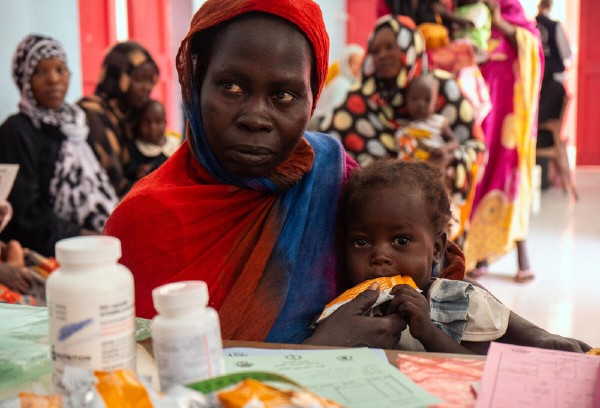All you need to know about the WFP food basket
Story | 8 January 2025
WFP's goal of a world with zero hunger can only be achieved by addressing the immediate and underlying causes of malnutrition. The right nutrition at the right time is fundamental to stop people dying in humanitarian emergencies, to ensure optimal health and development throughout life, and for the long-term prosperity of countries.
Malnutrition is a general term that covers both undernutrition and overweight/obesity. Symptoms occur when a person’s nutrient or energy intake does not meet, or exceeds, their body’s requirements. It weakens the immune system, affects children’s growth and development, and can be fatal. It is also the single largest contributor to disease. Undernutrition alone is the underlying cause in almost half of all deaths in children under 5, and one-fifth of deaths among pregnant women. Malnutrition costs the global economy US$3.5 trillion a year.
Every country in the world is affected by malnutrition in one form or another. Low-income countries face an unacceptably high burden of undernutrition, and almost all countries have growing numbers of people affected by overweight or obesity. The lack of affordable, nutritious diets is at the centre of this crisis.
Conflict, extreme weather events, ineffective food systems, poverty and gender inequality are barriers to people accessing nutritious food. The severity of malnutrition and inadequate diets is most profound in countries that face persistent crises, including those resulting from conflict, climate extremes and economic shocks.
Malnutrition perpetuates the cycle of poverty. It stops the development of nations and prevents a more equal world by hindering people’s development and potential. Malnutrition affects brain development, educational achievement and people’s long-term health – imposing huge costs on both individuals and national economies. Undernutrition costs up to 16.5 percent of GDP across Africa. In Latin America and the Caribbean, the double burden of malnutrition costs up to 16.3 percent of GDP. Meanwhile, in Asia, undernutrition costs up to 11 percent of GDP. In low- and middle-income countries, childhood stunting is estimated to cost the private sector US$135 billion every year in lost sales.

The first 1,000 days of life, from pregnancy to age 2, is a time of unparalleled growth and development. If children don’t get the nutrients their bodies need during this period, their lives are in danger and their development is threatened. If a child is malnourished, the impact is permanent: It affects their brain, their ability to learn and their future opportunities. Supporting good nutrition during the 1,000-day window from pregnancy to age 2 is the most cost-effective way to avert malnutrition and to ensure good health throughout life.
WFP’s primary focus is to reach people who are at greatest risk of malnutrition and inadequate diets. Much of our work targets young children and pregnant and breastfeeding mothers. They have the highest nutritional needs and the lowest reserves, and so are the most vulnerable to undernutrition. We also support other groups who are left furthest behind and who are most vulnerable to malnutrition, for example people living with HIV.
We adopt a ‘prevention first’ approach, working to safeguard the nutrition of those in humanitarian crises, and to support access to healthy, nutritious diets in more stable settings.
In emergencies, we provide specialized nutritious foods to prevent malnutrition and to aid the recovery of those who are already malnourished. Where markets are functioning, we distribute cash or vouchers so families can afford nutritious food, and we work to ensure our food assistance is nutritionally adequate. We also collaborate with governments and other nutrition partners to monitor vulnerabilities. This includes using innovative approaches in some of the most inaccessible regions on the planet.
In more stable settings, we support governments to strengthen and improve food and social protection systems, promote the local production and consumption of nutritious foods, and facilitate the fortification of staple foods with vitamins and minerals.
Story | 8 January 2025
Story | 29 October 2025
Story | 22 April 2025
Story | 27 May 2025
Story | 16 October 2025
Story | 4 December 2023